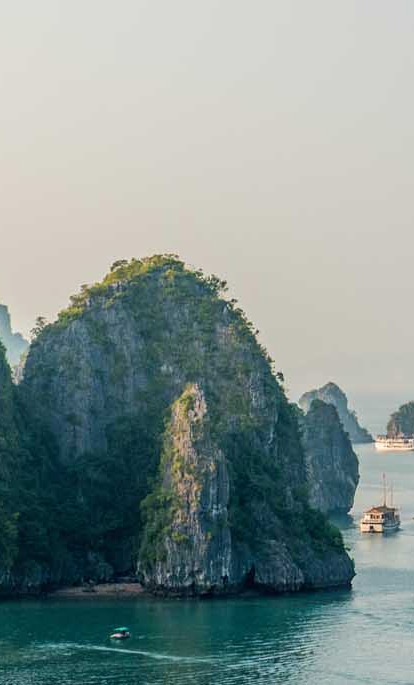
A few suggestions to get the holiday planning process started

Dive into Vietnam’s vistas on a holiday tailor-made by our talented consultants. We'll guide you down roads less travelled with visits to regions like Ha Giang, where you can stay in authentic homestays and connect with local Hmong tribes. Our savvy in-country Concierges and guides are experts at adapting tours to help you find adventure in Vietnam’s caves, romance on its beaches or family fun throughout this friendly country. Plus, with our e-Visa arrangement, fast-track airport services and options for every budget, you can relax knowing the finer details are sorted.
ENQUIRE NOWDiscover different ways to explore Vietnam
Practical advice and inspiration to help you prepare for your holiday
Our passionate team can’t get enough of Vietnam’s buzzing capital, floating villages and lush rice paddies – and they’re eager to share their love for the country with you. We’re constantly seeking experiences that sensitively tell Vietnam’s history, from breakfast with a former fighter pilot to dinner with local Chams. Our guides are excellent communicators and will match each tour to your interests, be that culture, history, food or art. From Hanoi to Ho Chi Minh, with the help of our clued-up Concierges and 24/7 helpline, you’re only ever seconds away from our expert advice.

Vietnam holidays offer diverse scenery and authentic experiences at every turn. As well as a vibrant city scenes, you’ll find unmatched serenity and a handful of UNESCO world heritage sites from the picturesque town of Hoi An to the karst limestone pinnacles of Halong Bay. Immerse yourself in authentic culture, staying in a homestead in a remote mountain village, or choose a boat ride along the Mekong River, one of the best ways of absorbing life on the river bank. Watch bulging rice baskets and exuberantly-coloured flowers carted to and from floating markets, and fishermen loading their boats, proud of their morning catch. Then there’s Vietnam’s fresh and aromatic cuisine, almost unrivalled, making the country one of the most exceptional foodie destinations in Southeast Asia. Which is saying something.
Culture lovers will no doubt revel in this country with a deep-seated authenticity, discovering beautiful landscapes, ornate temples and fragrant markets. Meanwhile, historians can learn about its colonial past in cities such as Ho Chi Minh and the attractive capital of Hanoi, as well as exploring iconic places such as the UNESCO-listed Halong Bay. Vietnam’s romantic landscapes are perfect for honeymooners. Expect flawless hospitality and exotic backdrops from flora-rich forests to blissful beaches.
To really appreciate the country’s highlights, in an ideal world Vietnam holidays wouldn't really be any less than two weeks long, with the help of a driver and a locally-born guide. We’d also always recommend that to include three to four days at the end of your trip relaxing by the sea.
Hanoi is vibrant and exciting with motorbikes and scooters weaving in and around as you wander around in awe. The energetic feel to the city is best enjoyed with a tour on a cyclo (Vietnam's answer to an un-motorised tuk tuk), or a complete foodie tour exploring all the street markets and meeting locals. Ho Chi Minh (formerly known as Saigon) is also alive with activity and great for sightseeing on foot or by cyclo. Ho chi Minh himself is even available to visit, in a mausoleum of course. American War museum, a UNESCO World Heritage site is also housed here and gives an insight into the country's history. For a quieter pace of life, Vietnam's beaches are simple stunning. Visit one or more of the beaches of Danang, Hoi An, Nha Trang and Phan Thiet as well as the Vietnamese paradise island Con Dao. Aside from un-spoilt beaches, places like Hoi An are famous for their tailors and fine cafes and restaurants. Halong bay in the North offers a little something different than cities and beaches with it its stunning limestone islets and emerald green waters. Sail the waters in a traditional Vietnamese junk boat and have a totally fresh experience soaking up the true beauty of Vietnam, eating fine food, exploring caves and most likely taking a LOT of pictures.
Looking for a trek around the country’s forested mountains or cruise in incredible Halong Bay? Our specialists can create a thrilling adventure in style, staying in charming local homesteads as well as stylish upscale hotels.

Our team of destination experts will get to know you and your unique requirements for your holiday

We work with you to build an ultra-personalised holiday itinerary with your choice of accommodation, experiences and activities

All of our holidays include little extras designed to make a big difference to your trip, from fast-tracking you through airport check-in and security to our network of local Concierges